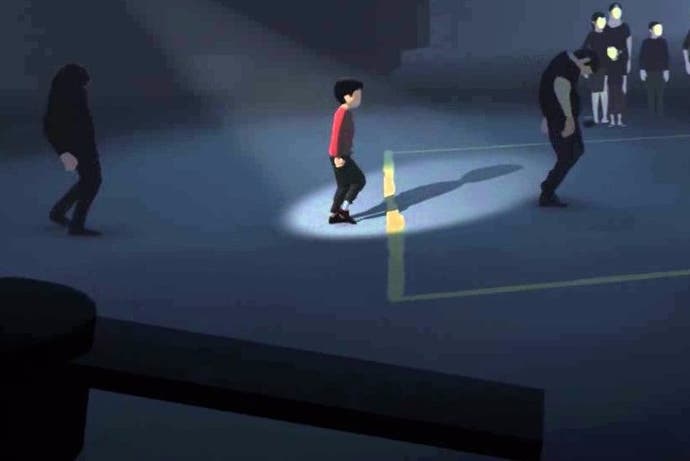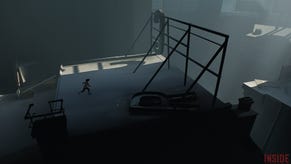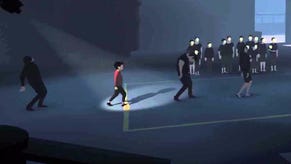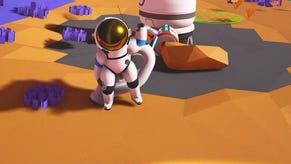What's going on at the end of Inside?
Spoilers! (Seriously, SPOILERS).
This is an article about Inside's ending. As such, we will be spoiling it. All of it. Including details and bonus content you may have missed. You have been warned.
Limbo developer Playdead's latest surreal nightmarish adventure Inside is memorable for a lot of reasons. It looks fantastic, the pacing and puzzles are on point, and the sound design is as devilishly unsettling as they come. But if there's one thing Inside is going to be remembered for it's the game's completely bonkers conclusion.
After spending a few hours journeying through a cryptic facility full of ominous scientists, creepy subterranean children, and seemingly deactivated mindless men, our avatar is sucked inside a chamber with a big old fleshy blob that absorbs our hero until they become a sentient many-limbed monstrosity. Hilarity ensues.
For the game's final 20 or so minutes, you're in control of a horrifying biological experiment gone wrong. Or possibly right. It's a little hard to tell. But either way, you get to smash the facility you previously spent hours stealthily creeping through as a vengeful figure of disgusting power. It's glorious! But what does any of it mean?
Admirably, it's not really clear. With Inside's deliberately open-ended conclusion there's still a lot left unknown, yet unlike the willfully beguiling denouement of games like The Witness or Dear Esther, Playdead offers just enough concrete context to piece together a comprehensible plot. It's just not exactly clear what that plot is. But here's a few possible theories:
Theory 1: The boy is being controlled by the blob.
This is the most obvious explanation. We spend a few hours sneaking a boy into an ominous factory of horrific experiments with the presumption that he's trying to shut the place down. Only towards the end he willfully breaks through a series of locks so he can climb into a tank with an unholy creature that absorbs him and grows powerful enough to escape. How did the boy know to go there? Why is the blob such a magnetic creature, pulling the player character towards it before swallowing him whole? Why was the blob laying immobile until it became one with the boy? Clearly the creature had been possessing him the whole time and luring him towards it as a means to free itself.
And can you blame it? The corporate goons are clearly up to no good with their penchant for kidnapping people, conducting mind control experiments, and ostensibly mutating specimens into horrific monstrosities. In many ways, the many-limbed mutation at the end is the most human character in the game. Pardon the cliche, but who's the real monster, eh?
Theory 2: The boy is being controlled by a scientist.
As fun as the former theory is, there's no definitive proof that the blob is the mastermind behind all this. Maybe the whole game is part of a larger experiment for this corporate monolith.
The evidence for this is that during the escape sequence some of the scientists seem be be helping the blob get out. This might just be because they're trying to save their own bacon, but it's curious how some of the scientists throw you objects that can be used to solve puzzles and escape. It seems like they want the player's new blob form to be intelligent and strong. In other words, the blob experiment may have gone a little haywire in that it killed a handful of people and caused a fair bit of property damage, but by and large it was a success. To quote Ian Holm in Alien, the blob is "a perfect organism". One capable of raw physical power and high intellect.
Theory 3: The boy is being controlled by a renegade force represented by the player.
But what if the boy isn't being controlled by anything physically represented in the game? Here's where the secret ending comes into play. But first, a quick note on how to access it:
To acquire this hidden conclusion the player needs to find every hidden orb in the game. Then, they must replay one of the game's earliest setpieces in a corn field. There's a hidden hatch here that when accessed leads to a musical puzzle. Solve that and you're home free.
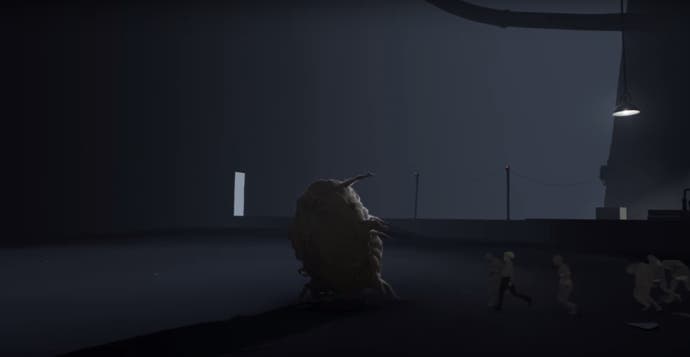
At any rate, this conclusion ends with the boy unplugging the power to the facility. After doing so, he collapses into the same position as all the mindless drone people after you relinquish them from our control. The lights dim. The end.
This makes it clear that the boy is being controlled the whole time by someone inside the facility (as opposed to a rival corporation or army trying to infiltrate the base to steal its biological experiments). But by who? If he's being possessed by the blob, he wouldn't power himself down before achieving his goal. The same is true if he's being controlled by a scientist. But maybe it's someone we don't see. Someone with an ulterior motive. Someone who is shocked and mortified by what's going on and wants to throw a wrench into the gears of this ungodly, cruel facility. Someone... like us!
Stay with me here. After all, it's impossible to access this secret ending unless the player has completed the game. It relies on knowledge and accomplishments down the road. Knowledge that neither the blob nor any scientists represented in the game could have at this juncture. Only the player is capable of accessing this hidden option which ostensibly puts an end to the boy, the blob, and any inhumane experiments being conducted. It's the closest thing we have to a happy ending, though it certainly wouldn't seem happy were it unlockable at the off. We'd simply see the boy collapse and think it was yet another untimely fate. A game over.
Perhaps that's where the title comes from: the player is "inside" the game. They're part of its fiction in a fourth wall break so graceful you'd be hard pressed to catch it. Of course the title also refers to the boy going inside the blob at the climax, the blob being imprisoned inside this facility, and fact that the boy frequently jacks inside the minds of others.
In conclusion...
There are many interpretations about what going on here, and Playdead is clever enough to offer just enough of a breadcrumb trail to form a story through its use of visuals, mechanics, sound and design, yet the Danish studio leaves the details just out of view forcing the player to stretch their imaginative muscles to make any sense out of it. And when it comes right down to it, that's the point: The story of Inside isn't inscribed in stone, but rather inside your own head.
